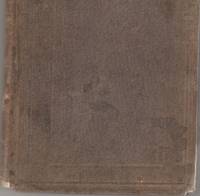![Atlas des Indes Occidentales, ou Description Géo-Hydrographique des Régions, des Côtes, des Isles, & des Mers, connues sous le nom d'Indes Occidentales, dans laquelle On trouve réunis tous les Détails Géographiques & Nautiques qui appartiennent à c... - [THE WEST-INDIES]](https://d3525k1ryd2155.cloudfront.net/h/521/981/1035981521.1.m.jpg)
Atlas des Indes Occidentales, ou Description Géo-Hydrographique des Régions, des Côtes, des Isles, & des Mers, connues sous le nom d'Indes Occidentales, dans laquelle On trouve réunis tous les Détails Géographiques & Nautiques qui appartiennent à c... - [THE WEST-INDIES]
by JEFFERYS, THOMAS
- Used
- Hardcover
- Condition
- See description
- Seller
-
Copenhagen, Denmark
Payment Methods Accepted
About This Item
1777. London, Robert Sayer & Jean Bennett, 1777. [Engraved title: London, Sayer & Bennett, 1775]. Folio. Recently bound in a magnificent pastiche-binding of brown half calf with six raised bands and gilt red leather title-label to elaborately gilt spine. Vellum corners and lovely marbled paper over boards. The binding is made over the original one, preserving the original sewn spine underneath as well as the original end-papers. An excellent, beautiful copy. Very clean and fresh. Only minor, light browning to a few maps, and last map with a bit more staining. One map with a small tear to lower margin, far from effecting engraving. Previously in the possession the Danish medieval estate Ravnholt, since the 18th century owned by the noble family of Sehestedt Juul, with discreet stamps from this ownership to title-page: "Sehestedt Juel" and "Rauenholdts Bibliothek". Title-page (French) + 6 pp. of preface (French) + (2) pp. of index (French) + double-page engraved, illustrated title (English) + 36 double-page and 3 single-page engraved maps, all (but one) dated London, Sayer, 1775 (one map - Antigua - without the year, but London, Sayer). Scarce first French edition - consisting in all the original 39 maps of the 1775 English edition (all (but Antigua) dated 1775) and the engraved double title-page in English, preceded by a French title, preliminary discourse (also in French), and index - of Jeffery's seminal West-India atlas, one of the most important works on the West Indies and the work that we have to thank for the introduction of "Carribean" as the designation that was to become standard on maps. The work played a pivotal rôle in the geo- and cartographical denomination of places and areas in this part of the world. In his preface, Jefferys does away with previous terms applied by geographers: "La division des Espagnols, & elle se trouve tout-à la fois physique & politique, fut adoptée bientôt par les Anglois, les Hollandois & queslques autres peuples; la plûpart des navigateurs & des marchands en s'y conformant, ont imposé depuis longtemps à tous les Géographes la nécessité de diviser l'Amerique en trois parties, savoir, "Amerique du Nord", "Indes Occidentales", "Amerique du Sud." Mais les Géographes, surtout les Francois, ont perséveré dans leur ancienne division, probablement parce qu'ils aiment à se répéter, & souvent aussi à se copier l'un l'autre." (From the preface, p.2). (i.e.: "The division of the Spanish, and this is found in both physics & polics, was soon adopted by the English, the Dutch & some other populations; the main part of navigators and merchants have complyed herewith and have long made clear to geographers the necessity to divide America into three parts, namely, "North America", "West Indies", "South America." But geographers, especially the French, have persevered in their old division, probably because they like to repeat, and often also to copy, one another").But not only does Jefferys extend this denominal division of America to geographers and cartographers, he also (re-)introduces the designation that was to become standard of the Caribbean: "Les premier Espagnols l'appellèrent Mer du Nord lorsqu'ils eurent découvert une nouvelle mer au delà de l'isthme de Panama. Quelquefois on lui a donné le nom de "Mer Caribe" ou "Caribenne", qu'il auroit mieux volu adopter que de laisser anonyme un aussi vaste espace." (From the preface, p. 2, §1).- "Although the best-known sea of the New World, the Caribbean remained nameless longest. It was the original Mar del Norte, a term promptly extended to all parts of the western atlantic. Velasco tried to find a proper name for it, saying: "de los Canibales llaman el golfo grande del mar Océano desde de Deseada y Dominica por toda la costa de Tierra Firme, Yucatán, Golfo de Tierra Firme y de las islas del mar del Norte." This compiler in Spain, regarding the maps before him, made the distinction we do between Caribbean Sea and Gulf of Mexico. (Gulf of Tierra Firme was that of Darién.) Velasco remained in manuscript until the nineteenth century, and I do not know that his Gulf of the Cannibals was ever thus known. In the introduction to his "West Indian Atlas", Thomas Jefferys wrote, two centuries later: "It has been sometimes called the Caribbean-Sea, which name it would be better to adopt, than to leave this space quite anonymous"; he did so on his map. North European nations at the time were in possession of the Carib islands (the Lesser Antilles) and it is perhaps thus that Jefferys introduced the designation that was to become standard on maps but was not adopted in Spanish lands." (C.O. Sauer, "The Early Spanish Main", p. 2). As one of the earliest documentations of the West Indies, Jefferys' seminal "West-India Atlas" was informed by prevailing attitudes about the legitimacy of Britain's colonial enterprises and contemporary debates surrounding the abolition and emancipation movements and played a significant rôle in the spreading of knowledge regarding this part of the world. Jefferys himself, one of the most prominent and prolific map publishers and engravers of his day, was opposed to the slave-trade, which unfortunately hinged upon the sugar trade that the atlas was designed to aid, and also spoke out against it. The English cartographer Thomas Jefferys (c. 1719-1771), "Royal Geographer to King George III" was the leading map supplier of his day and as such had access to information that many other cartographers did not. He engraved and printed maps for government and other official bodies and produced a wide range of commercial maps and atlases, most famously of America and the West Indies.Having died in 1771, he did not live to see the publication of his great "West India Atlas", which was published by Robert Sayer, who, in partnership with John Bennett, had acquired his maps. Thus, the West India Atlas was published posthumously, under Jefferys' name. Philips III:p. 570.
Reviews
(Log in or Create an Account first!)
Details
- Bookseller
- Herman H. J. Lynge & Son
(DK)
- Bookseller's Inventory #
- 49339
- Title
- Atlas des Indes Occidentales, ou Description Géo-Hydrographique des Régions, des Côtes, des Isles, & des Mers, connues sous le nom d'Indes Occidentales, dans laquelle On trouve réunis tous les Détails Géographiques & Nautiques qui appartiennent à c... - [THE WEST-INDIES]
- Author
- JEFFERYS, THOMAS
- Book Condition
- Used
- Binding
- Hardcover
- Date Published
- 1777
- Weight
- 0.00 lbs
Terms of Sale
Herman H. J. Lynge & Son
30 day return guarantee, with full refund including original shipping costs for up to 30 days after delivery if an item arrives misdescribed or damaged.
About the Seller
Herman H. J. Lynge & Son
Biblio member since 2017
Copenhagen
About Herman H. J. Lynge & Son
Herman H. J. Lynge & Son A/S was founded 1821 in Copenhagen, and has been a member of the Danish Antiquarian Booksellers Association (ABF) and International League of Antiquarian Booksellers (ILAB-LILA) since their beginning.
Glossary
Some terminology that may be used in this description includes:
- Raised Band(s)
- Raised bands refer to the ridges that protrude slightly from the spine on leather bound books. The bands are created in the...
- Gilt
- The decorative application of gold or gold coloring to a portion of a book on the spine, edges of the text block, or an inlay in...
- New
- A new book is a book previously not circulated to a buyer. Although a new book is typically free of any faults or defects, "new"...
- Spine
- The outer portion of a book which covers the actual binding. The spine usually faces outward when a book is placed on a shelf....
- Vellum
- Vellum is a sheet of specialty prepared skin of lamb, calf, or goat kid used for binding a book or for printing and writing. ...
- Calf
- Calf or calf hide is a common form of leather binding. Calf binding is naturally a light brown but there are ways to treat the...
- Marbled Paper
- Decorative colored paper that imitates marble with a veined, mottled, or swirling pattern. Commonly used as the end papers or...
- Folio
- A folio usually indicates a large book size of 15" in height or larger when used in the context of a book description. Further,...
This Book’s Categories
Also Recommended
-

Save 10% on every purchase!
Join the Bibliophiles’ Club and start saving 10% on every book.
$29.95 / Year







